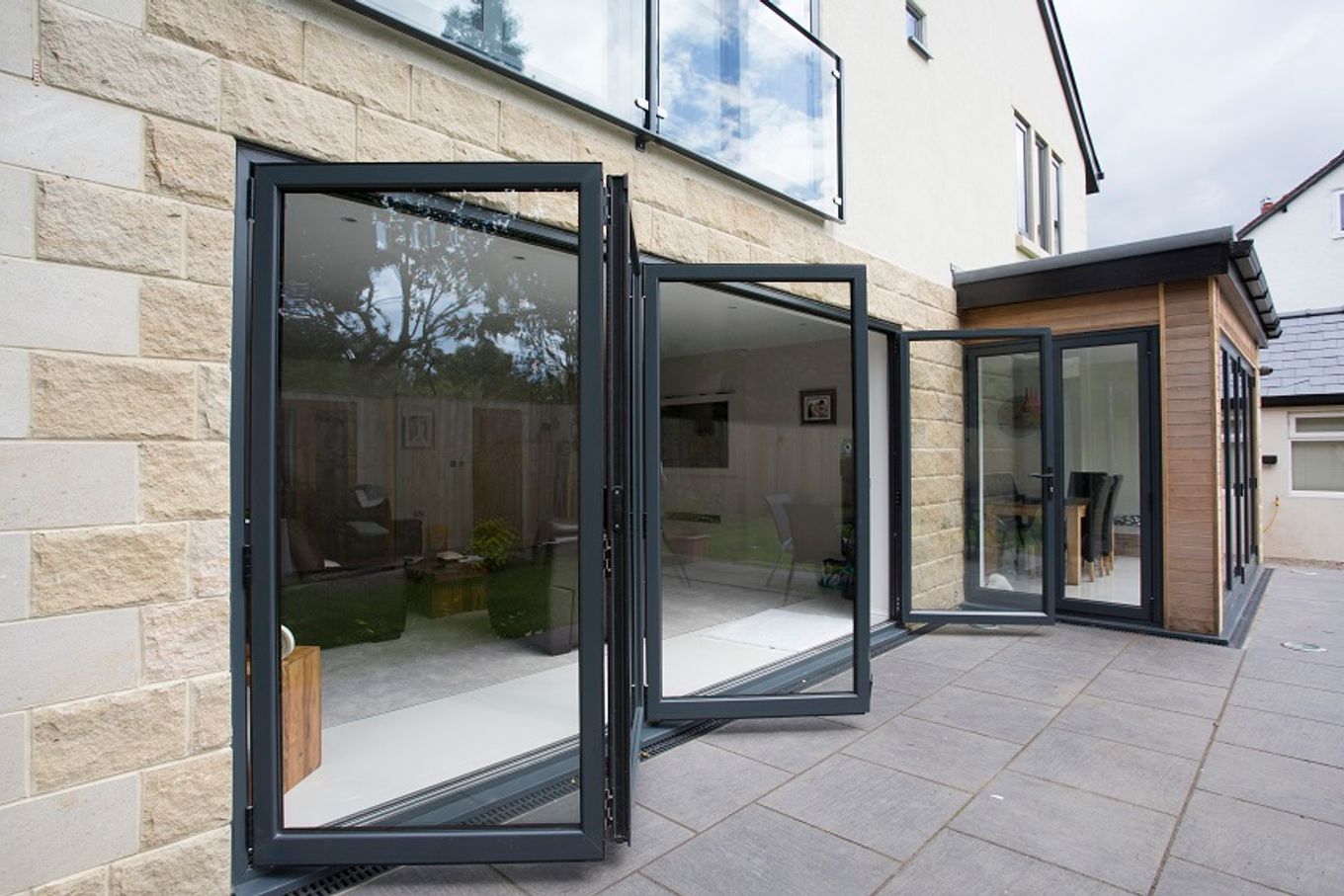Change sector:
Trade
Commercial
Blog
Need advice? Call our order support line: 01706 260700
doors
Energy Efficiency of Aluminium Bi-folding Doors
15 November, 2017
Considering the energy efficiency of all products used within a building design project is now an essential step in the planning process. This includes reviewing the efficiency of aluminium bi-folding doors.

The energy efficiency of aluminium bi-folding doors is important to consider across all building projects, including renovations, new builds and commercial properties. Bi-folds are an increasingly popular feature, they can be custom designed with any property in mind, making them a super convenient yet affordable product to use.
The sleek style of aluminium bi-folding doors is highly sought after, yet even with such an in-demand product, we think it is still really important to find out the efficiency of the doors before purchasing. Especially because less efficient products that are draughty will let heat out of a property and won’t be as protected against various weather conditions.
At AluFoldDirect we make sure all our products, including aluminium bi-folding doors, meet and exceed Building Regulations in England and Wales. Our standard glazing units used with our bi-folds are designed to offer optimal thermal efficiency. These units, at 28mm with a Planitherm coating, have a centre pane U-Value of 1.2.
The U-Value of a building product measures how efficiently it insulates a building. As a general rule, the lower the value, the better the insulation is. The Planitherm coating used is an advanced technology that reflects radiated heat back into a room rather than letting it escape through the glass, whilst also allowing heat and light from the sun pass through. This means that our aluminium bi-folding doors contribute to making a building lighter, warmer and more energy-efficient, due to the thermal insulation properties it has.
Water Tightness
Our aluminium bi-folding doors are rigorously tested to ensure that they are watertight and remain protected against an array of weather conditions. Aluminium bi-folding doors with a standard threshold are subject to a Weather Tightness test. The results of the test state that they are suitably airtight to attain Class 4 permeability, and are resistant to water penetration, meeting and exceeding requirements. The doors are also resistant to wind loads and repeated pressure cycles.
These tests were carried out under the BRE Standard Terms and Conditions of Business for testing and to the UKAS BRE Specific Procedures Series F, as BRE Job number 254786 in project number CV3157.
Using Aluminium
As the popularity in aluminium bi-folding doors increases, it is also important to consider their environmental impact. Around 90 percent of aluminium used in the industry is recycled, lowering the carbon footprint of the metal. The quality of aluminium is not lost when it is recycled, meaning it can be used over again, effectively having less impact on the environment.
The thermally broken aluminium used in our aluminium bi-folding doors paired with the thermally insulated glazing units, help to sustain the energy efficiency within the home by keeping it warmer in the winter and cooler in the summer. Aluminium is also an ideal material to use for doors in coastal climates. As the metal profile does not expand or contract, it is resistant to varying levels of moisture, salt spray and heat found in coastal areas.
You can also discover aluminium at our AluFoldDirect Aluminium Glazing Design Centre, where we can provide you with all the information you need regarding the energy performance of our range of products.

